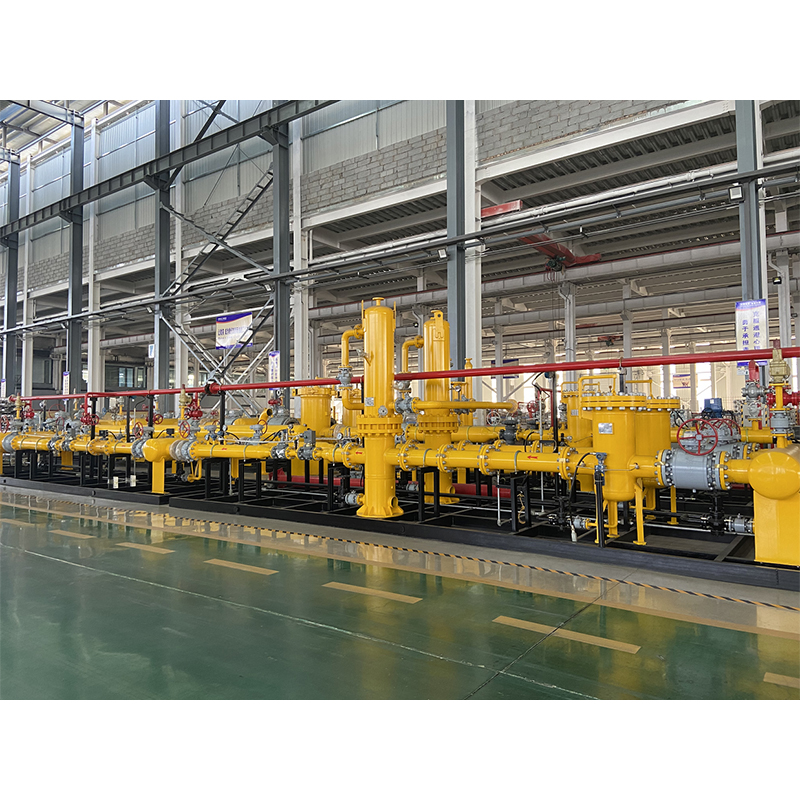
8 月 . 12, 2024 19:06
Back to list
Design and Implementation of Efficient Pressure Reduction Skids for Industrial Applications and Safety Solutions
Pressure Reduction Skids An Essential Component in Fluid Transport Systems
In various industrial applications, maintaining precise control over fluid pressures is crucial for safety, efficiency, and equipment longevity. One of the key technologies that aid in achieving this control is the pressure reduction skid. This specialized piece of equipment is designed to reduce and manage pressure from high-pressure sources to desired lower levels, ensuring that systems operate safely and effectively.
What is a Pressure Reduction Skid?
A pressure reduction skid is essentially a compact assembly of piping, valves, regulators, and other components mounted on a common framework or platform. The primary purpose of this assembly is to lower the pressure of fluids—be it gas, oil, or water—before they reach critical parts of a system, such as compressors, pumps, or processing units. By doing so, pressure reduction skids prevent the potential hazards associated with excessive pressure, such as leaks, ruptures, or catastrophic failures.
Components of a Pressure Reduction Skid
1. Pressure Regulators These devices automatically adjust and maintain the desired output pressure regardless of variations in the input pressure. They are critical for ensuring consistent operation across various applications.
2. Valves Skids incorporate different types of valves (e.g., gate, globe, ball valves) to control the flow and isolation of the fluid. These valves allow operators to manage fluid routing and maintenance activities safely.
3. Filters and Separators In many cases, fluids contain impurities or unwanted particulates. Filters and separators are integrated into the skid to ensure that only clean fluid reaches subsequent equipment, thereby prolonging their lifespan and reducing operational disruptions.
4. Instrumentation Pressure gauges, flowmeters, and control panels are vital for monitoring the system's performance. They provide real-time data to operators, enabling them to make informed decisions about the skid's operation.
5. Skid Framework The entire assembly is mounted on a robust frame designed for durability and stability, allowing for easy transportation, installation, and maintenance.
Applications of Pressure Reduction Skids
pressure reduction skid

Pressure reduction skids are widely utilized in various sectors of the economy, including oil and gas, chemical processing, water treatment, and power generation.
- Oil and Gas In upstream and midstream operations, these skids are crucial for managing the pressures associated with drilling and transporting hydrocarbons. They are particularly important for ensuring that gas is safely reduced before being processed or sent into pipelines.
- Chemical Processing Many chemical reactions require precise pressure conditions. Pressure reduction skids facilitate the safe handling of reactants and intermediates by controlling their pressure levels, thus enhancing reaction efficiencies and safety.
- Water Treatment In municipal and industrial water treatment facilities, skids help regulate the pressures during filtration and distribution processes. This capability is vital for ensuring the reliable delivery of treated water to communities.
Benefits of Using Pressure Reduction Skids
The integration of pressure reduction skids into fluid handling systems offers several advantages
1. Safety By managing high pressures, these skids help to mitigate risks associated with overpressure scenarios, ensuring the safety of personnel and equipment.
2. Efficiency Optimizing pressure levels enhances the efficiency of downstream processes, leading to lower operational costs and improved productivity.
3. Versatility Pressure reduction skids can be customized to meet the specific needs of various applications, making them suitable for a broad range of industries.
4. Ease of Maintenance The modular design of skids makes them easier to maintain and replace, minimizing downtime during repairs or upgrades.
In summary, pressure reduction skids play a pivotal role in ensuring the safe and effective management of fluid pressures across various industrial applications. Their importance cannot be overstated, as they contribute significantly to operational safety, efficiency, and reliability in fluid transport systems. As industries continue to evolve, the demand for such systems will likely grow, making pressure reduction skids indispensable in future operations.
Latest news
-
Unlocking The Quality Gas Pressure ReducersNewsNov.01,2024
-
The Role of Gas Pressure Reducing StationsNewsNov.01,2024
-
The Importance and Functionality of Safety Relief ValvesNewsNov.01,2024
-
The Essential Role of Safety Valves in Natural Gas ApplicationsNewsNov.01,2024
-
The Essential Role of Gas Pressure RegulatorsNewsNov.01,2024
-
Enhance Your Premium Gas FiltersNewsNov.01,2024

